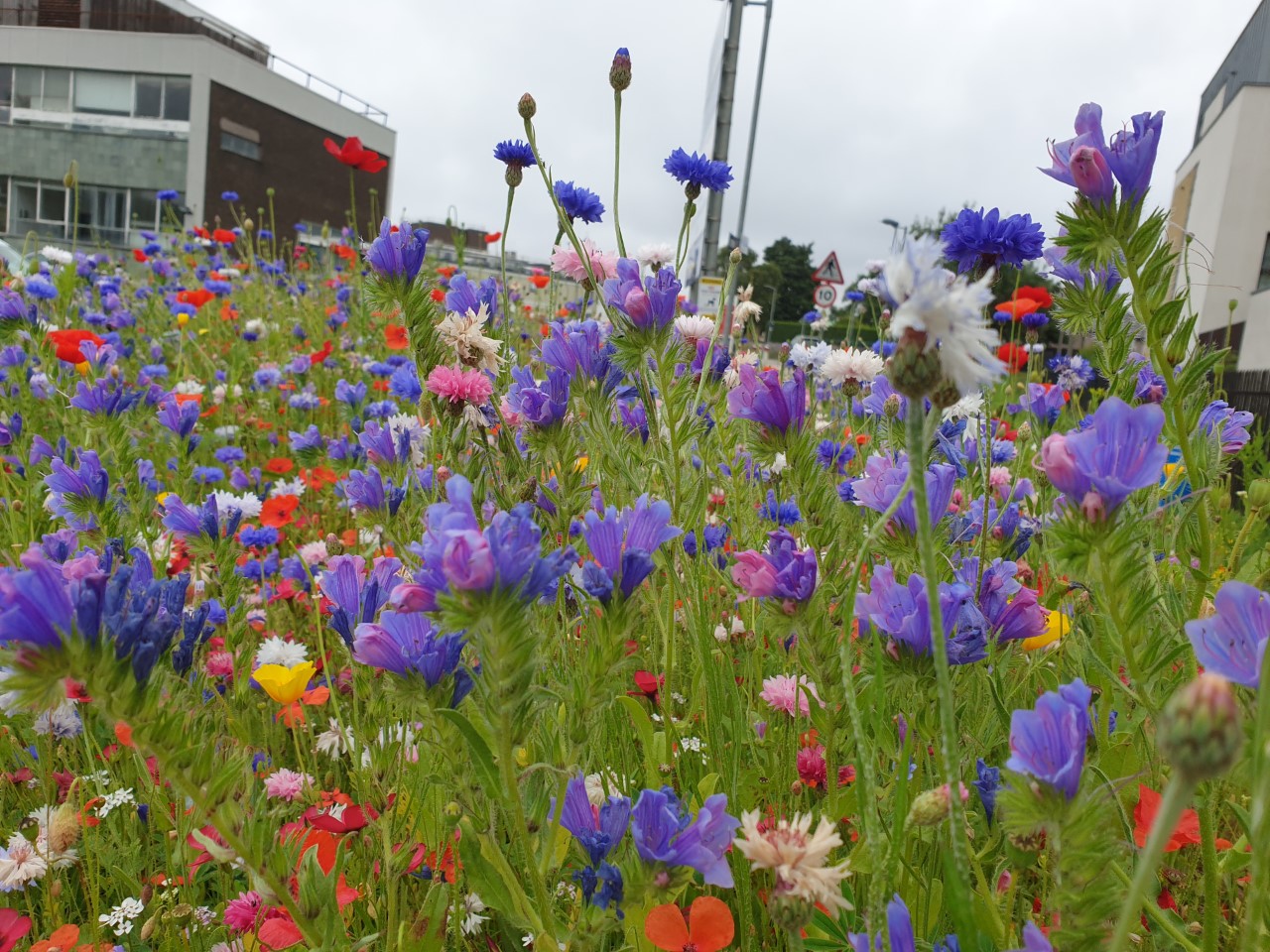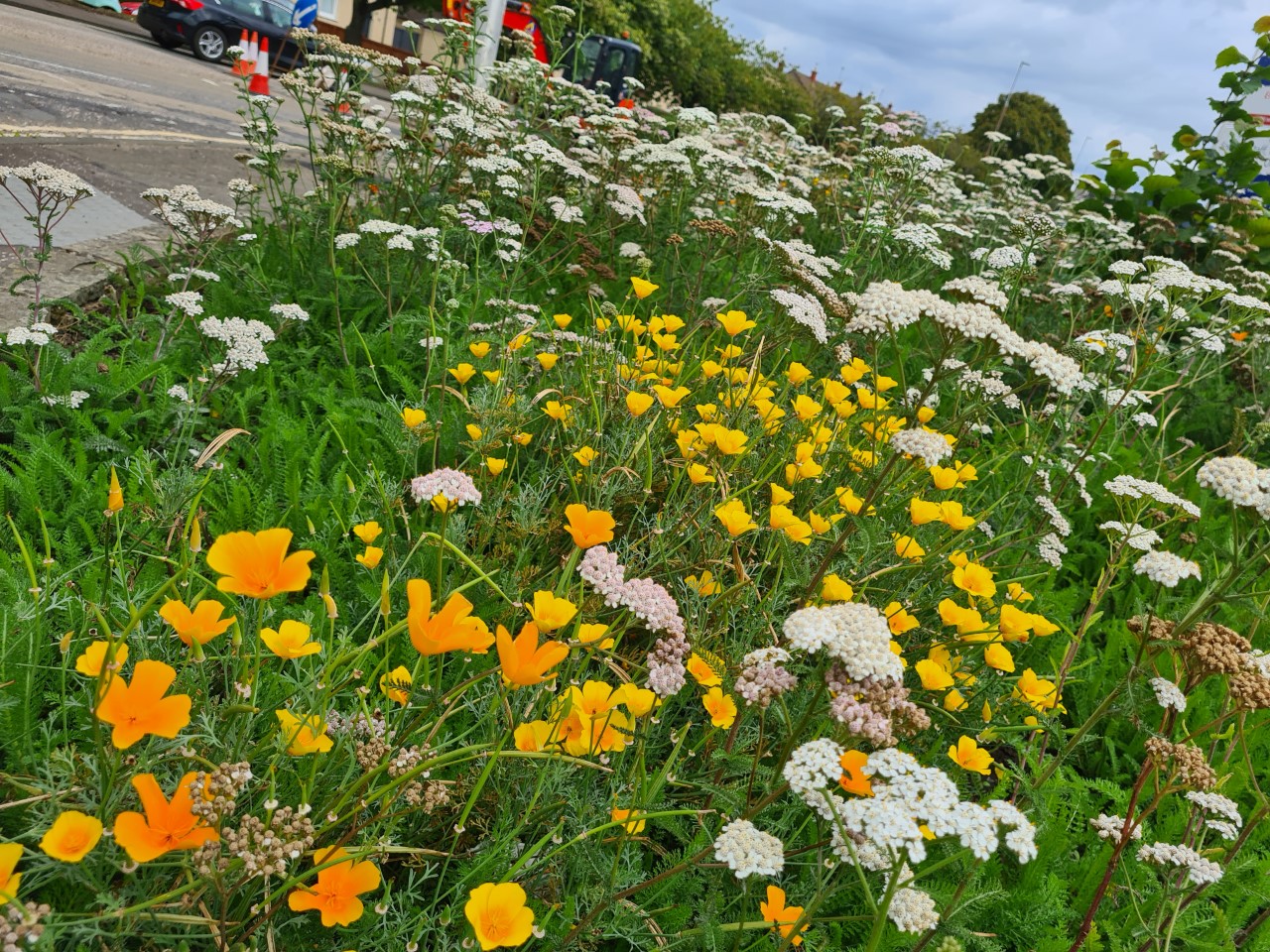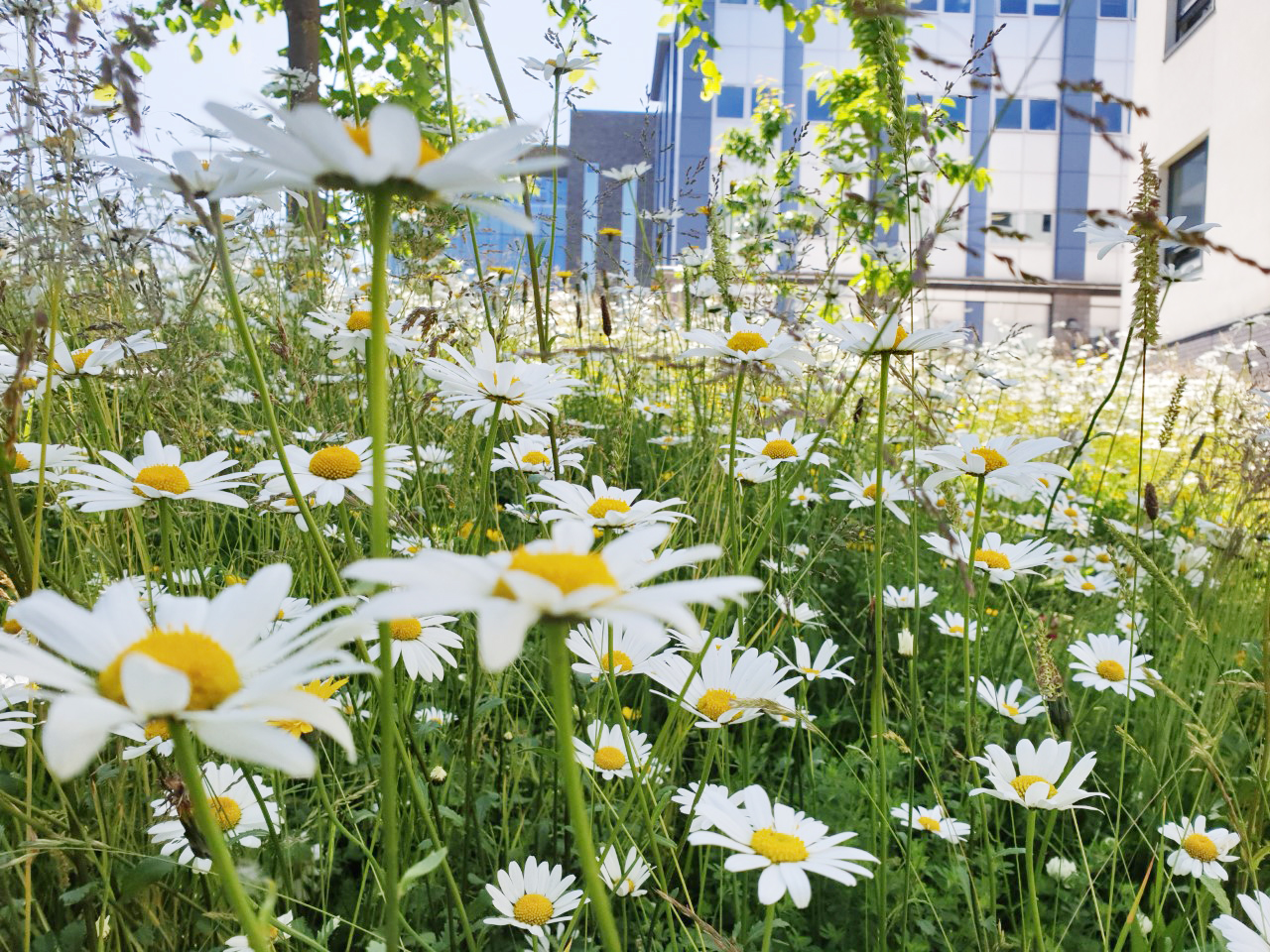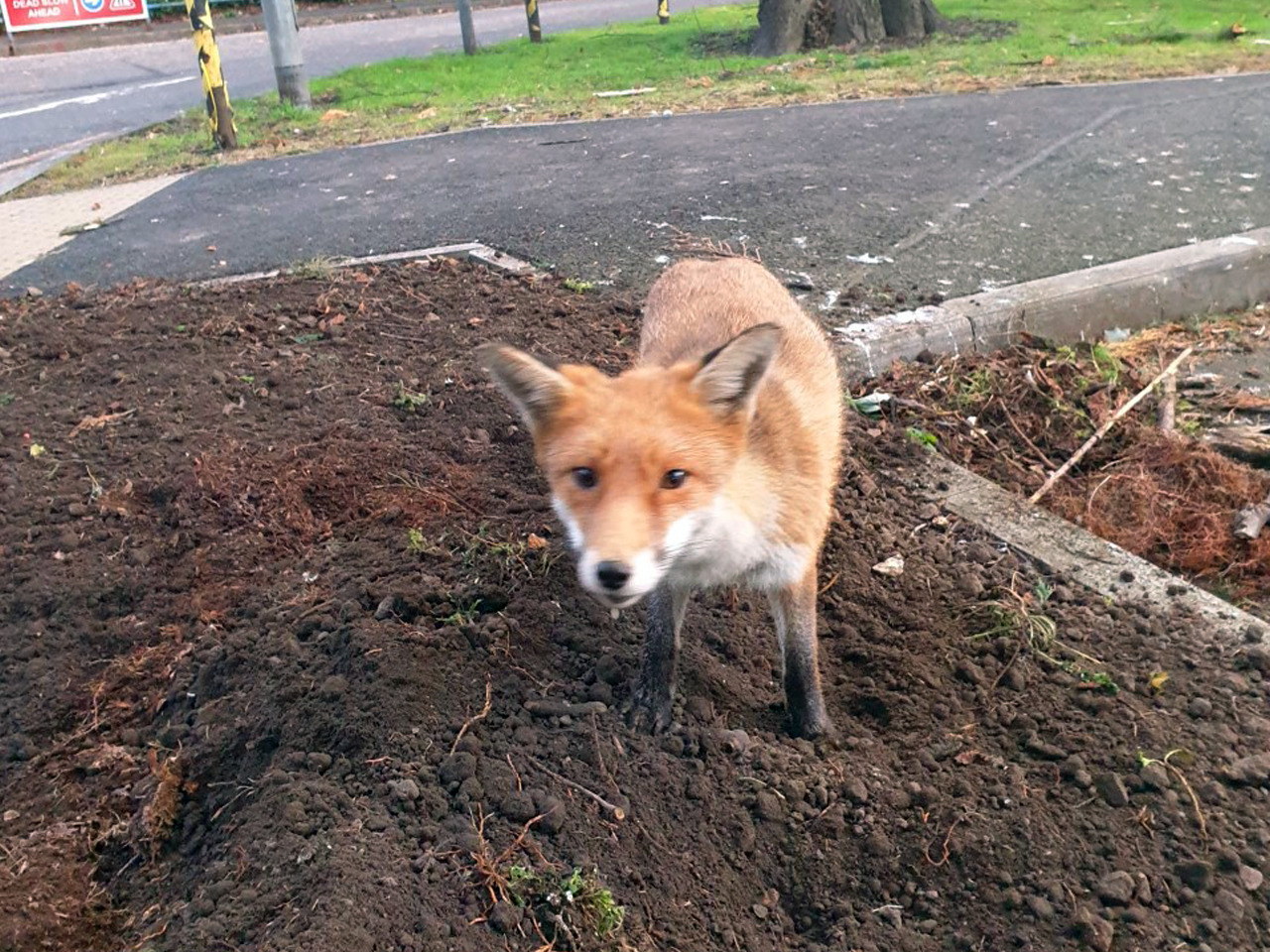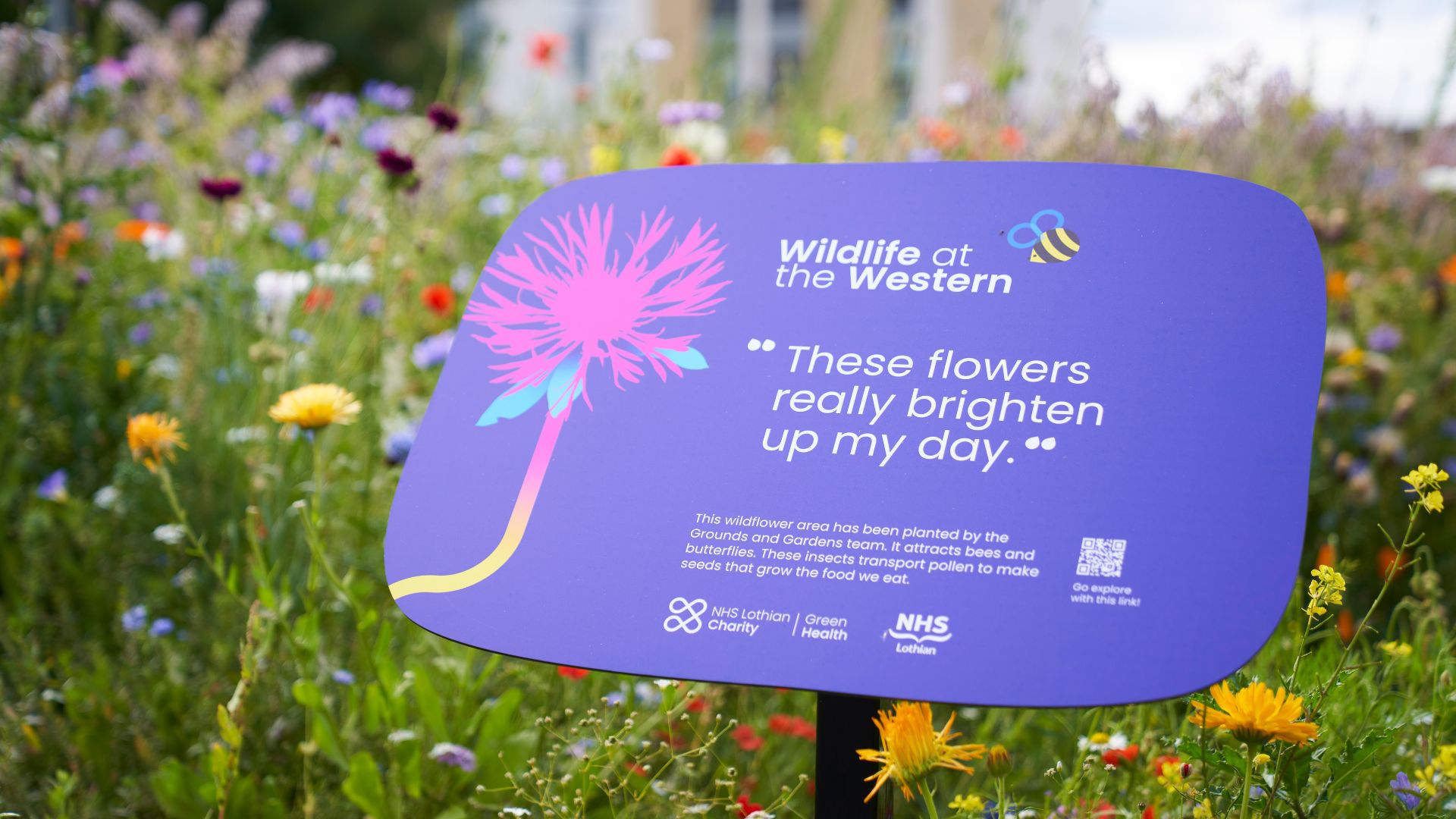
Project: Wildlife at the Western

Our hospital has different kinds of greenspaces that are available for patients, visitors and staff to use. The map below can help you find some of them but there are lots more to discover when you start looking.
Spending even ten minutes outside in one of these gardens can lower our stress levels, boost our immunity and increase our focus.
Even small spaces help to make our cities greener and more sustainable places to live. Trees improve the quality of the air we breathe, reduce the impact of climate change and provide a vital habitat for wildlife.
We need nature as our neighbour for our health and for the health of the planet. If we nurture nature it will look after us too.
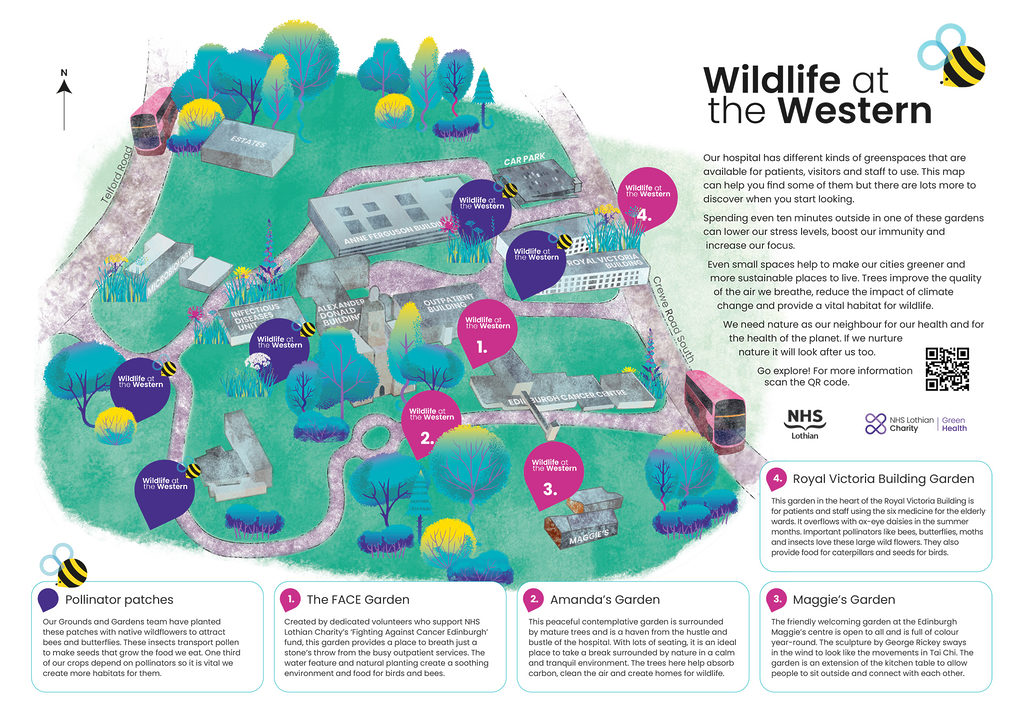
Download our map of the Western General Hospital showing the gardens and pollinator patches and go in search of some wildlife on your doorstep.
Gardens at the Western General Hospital
Created by the a dedicated group of volunteers from our Fighting Against Cancer Edinburgh (FACE) fund, this garden provides a place to breath just a stone’s throw from the busy outpatient services. The water feature and natural planting create a soothing environment and food for birds and bees. It is a place to stop and rest.
This peaceful contemplative garden is surrounded by mature trees and is a haven from the hustle and bustle of the hospital. With lots of seating, it is an ideal place to take a break surrounded by nature in a calm and tranquil environment. The trees here help absorb carbon, clean the air, and create homes for wildlife.
The friendly welcoming garden at the Edinburgh Maggie’s centre is open to all and is full of colour year-round. The sculpture by George Rickey sways in the wind to look like the movements in Tai Chi. The garden is an extension of the kitchen table to allow people to sit outside and connect with each other.
This garden, in the heart of the Royal Victoria Building, is for patients and staff using the six medicine for the elderly wards. It overflows with ox-eye daisies in the summer months. Important pollinators like bees, butterflies, moths and insects love these large wild flowers. They also provide food for caterpillars and seeds for birds.
Pollinator patches at the Western General
Our Grounds and Gardens team have planted these patches with native wildflowers to attract bees and butterflies. These insects transport pollen to make seeds that grow the food we eat. One third of our crops depend on pollinators so it is vital we create more habitats for them.
Get in touch
Get in touch if you would like to find out more or discuss how we can work together to benefit NHS Lothian patients and staff.

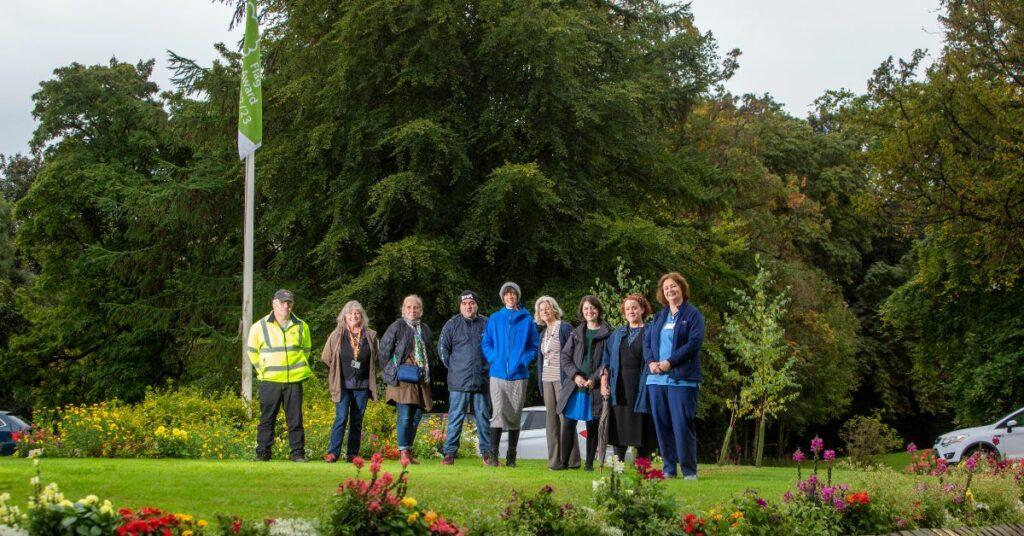
Connect to our network to learn and share
If you feel passionately about the benefits of nature and their potential in addressing health inequalities, join our Green Health Network. All you need are a few good ideas, a little time to spare and a willingness to be involved with promoting and supporting green health activities across the Lothians.

